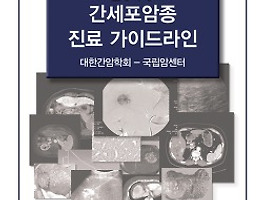국소 간세포암의 선호되는 치료는 수술적 절제입니다. 그러나 대부분의 환자들은 기저 간기능장애 또는 종양 범위로 인하여 수술에 적합하지 않습니다.
Child-Turcotte-Pugh A cirrhosis처럼 적절한 간기증이 있는 환자에서 curative partial hepatectomy가 최적의 치료이고 이를 적용할 수 있는 이상적인 환자는 간혈관 침범이 없고 간문맥고혈압 증거가 없고 간기능이 잘 유지되고 있는 solitary HCC입니다. 잘 선택된 환자의 장기적으로 재발이 없는 비율은 평균 40% 이상이고 5년 생존률은 90% 이상입니다. 많은 외과의들이 지름 5 cm 이하를 수술적 절제의 적격이라고 제한하지만 수술적 절제를 위한 종양 크기에 관한 일반적인 규칙은 없습니다. 크기가 작을수록 더 나은 결과를 보일지라도 혈관 침범이 없는 solitary HCC는 종양 크기와 관계없이 유사한 생존률을 나타냅니다.
현재 American Joint Committee on Cancer (AJCC)/Union for International Cancer Control (UICC) staging system for HCC에 따르면 대부분 전문가들은 stage IIIB, IVA, IVB를 절제불가능하고 간주합니다. IIIA는 T category가 multiple tumors, at least one of which > 5 cm이므로 lymph node, distant meta가 없다면 개수가 많다고 기술적으로 불가능한 것은 아닙니다.
비록 HCC의 tumor rupture의 드문 상황이 peritoneal seeding 가능성을 높이고 간절제 후 좋지 않은 결과를 나타낼지라도 이것이 필연적인 것은 아닙니다. 이와 같은 상황에서 가장 흔한 접근은 초기 출혈을 조절하는 것이며 이것은 embolization 또는 응급수술이고 가능하다면 이후 정식 staging을 하고 난 후 절제를 시행합니다.
Child-Turcotte-Pugh B cirrhosis인 HCC 환자는 morbidity와 mortality가 증가해서 이러한 경우 수술을 하는 것은 논란이 있습니다. 간이식 조건을 만족한다면 이러한 경우는 간이식이 더 나은 방법일 수 있습니다.
HCC 자체 이유 또는 기저 간기능장애로 인하여 수술적 절제를 할 수 없는 경우에 선택할 수 있는 방법은 간이식, thermal ablation & embolization과 같은 locoregional hepatic therapies, RT, systemic therapy입니다. 수술적 절제가 불가능한 경우 유일한 완치 방법은 간이식입니다. 간이식을 받는 거의 모든 환자들은 tumor extent보다는 간기능이 좋지 않은 경우입니다. 적어도 미국에서 간이식 대상은 solitary HCC ≤5 cm in diameter 또는 3개 이하 병변이면서 제일 큰 거이 3 cm보다 크지 않은 경우입니다. 당연히 혈관침범과 전이 소견은 없어야 합니다(the Milan criteria).
수술적 절제와 간이식이 불가능한 경우에는 TACE 또는 radioembolization과 같은 locoregional forms of therapy가 전신항암치료보다 선호됩니다. 일반적으로 1-2개이고 지름이 <4 cm인 경우에는 RFA와 microwave ablation에서 최고의 결과를 나타냅니다. 대부분의 임상의들은 이와 같은 시술을 Child-Turcotte-Pugh class A 또는B로 제한합니다. RFA와 microwave ablation은 또한 간이식을 기다리는 환자에서 병의 진행으로 dropout되는 비율을 줄이기 위해 "bridging" therapy로 사용되기도 합니다. TACE는 간절제 또는 RFA를 할 수 없는 큰 unresectable HCCs 치료에서 가장 많이 사용됩니다. TACE 또한 간이식 이전 bridging therapy로 사용되기도 합니다.
Hepatocellular cancer TNM staging AJCC UICC 8th edition
|
Primary tumor (T) |
|||
|
T category |
T criteria |
||
|
TX |
Primary tumor cannot be assessed |
||
|
T0 |
No evidence of primary tumor |
||
|
T1 |
Solitary tumor ≤2 cm, or >2 cm without vascular invasion |
||
|
T1a |
Solitary tumor ≤2 cm |
||
|
T1b |
Solitary tumor >2 cm without vascular invasion |
||
|
T2 |
Solitary tumor >2 cm with vascular invasion, or multiple tumors, none >5 cm |
||
|
T3 |
Multiple tumors, at least one of which is >5 cm |
||
|
T4 |
Single tumor or multiple tumors of any size involving a major branch of the portal vein or hepatic vein or tumor(s) with direct invasion of adjacent organs other than the gallbladder or with perforation of visceral peritoneum |
||
|
Regional lymph nodes (N) |
|||
|
N category |
N criteria |
||
|
NX |
Regional lymph nodes cannot be assessed |
||
|
N0 |
No regional lymph node metastasis |
||
|
N1 |
Regional lymph node metastasis |
||
|
Distant metastasis (M) |
|||
|
M category |
M criteria |
||
|
M0 |
No distant metastasis |
||
|
M1 |
Distant metastasis |
||
|
Prognostic stage groups |
|||
|
When T is... |
And N is... |
And M is... |
Then the stage group is... |
|
T1a |
N0 |
M0 |
IA |
|
T1b |
N0 |
M0 |
IB |
|
T2 |
N0 |
M0 |
II |
|
T3 |
N0 |
M0 |
IIIA |
|
T4 |
N0 |
M0 |
IIIB |
|
Any T |
N1 |
M0 |
IVA |
|
Any T |
Any N |
M1 |
IVB |
TNM: tumor, node, metastasis; AJCC: American Joint Committee on Cancer; UICC: Union for International Cancer Control.
Used with permission of the American College of Surgeons, Chicago, Illinois. The original source for this information is the AJCC Cancer Staging Manual, Eighth Edition (2017) published by Springer International Publishing.
Overview of treatment algorithm for hepatocellular carcinoma

PVE: portal vein embolization; TACE: transarterial chemoembolization; RFA: radiofrequency ablation; SBRT: stereotactic body radiation therapy; RT: radiation therapy.
* In the United States, patients with underlying chronic liver disease (cirrhosis, hepatitis C virus infection) are potentially eligible for orthotopic liver transplant if they fulfill the Milan criteria (solitary hepatocellular carcinoma ≤5 cm in diameter or up to three separate lesions, none of which is larger than 3 cm; no evidence of gross vascular invasion; and no regional nodal or distant metastases). If not a liver transplantation candidate because disease is outside transplant (Milan) criteria, downstaging therapy (eg, RFA, TACE) could be considered, followed by reassessment for liver transplantation.
¶ Bridging therapy refers to local treatment (typically RFA or TACE) while awaiting orthotopic liver transplantation in order to reduce the risk of progressing beyond Milan criteria.
Δ Options for initial systemic therapy include participation in a clinical trial (preferred), sorafenib, lenvatinib, nivolumab, or cytotoxic chemotherapy (refer to UpToDate text).
◊ The best results with RFA are in patients with a smaller tumor size, and many institutions restrict RFA to lesions <4 cm.
REF. UpToDate 2020.05.08
'소화기내과(간) > 간세포암' 카테고리의 다른 글
| First-line atezolizumab plus bevacizumab for unresectable hepatocellular cancer (0) | 2020.09.08 |
|---|---|
| BCLC staging system and therapeutic strategy (0) | 2020.05.09 |
| 2018 간세포암종 진료 가이드라인 [암성 통증의 약물치료] (0) | 2018.09.15 |
| 2018 간세포암종 진료 가이드라인 [암성 통증의 약물치료] (0) | 2018.09.15 |
| 2018 간세포암종 진료 가이드라인 [선제적 항바이러스제 치료] (0) | 2018.09.15 |



